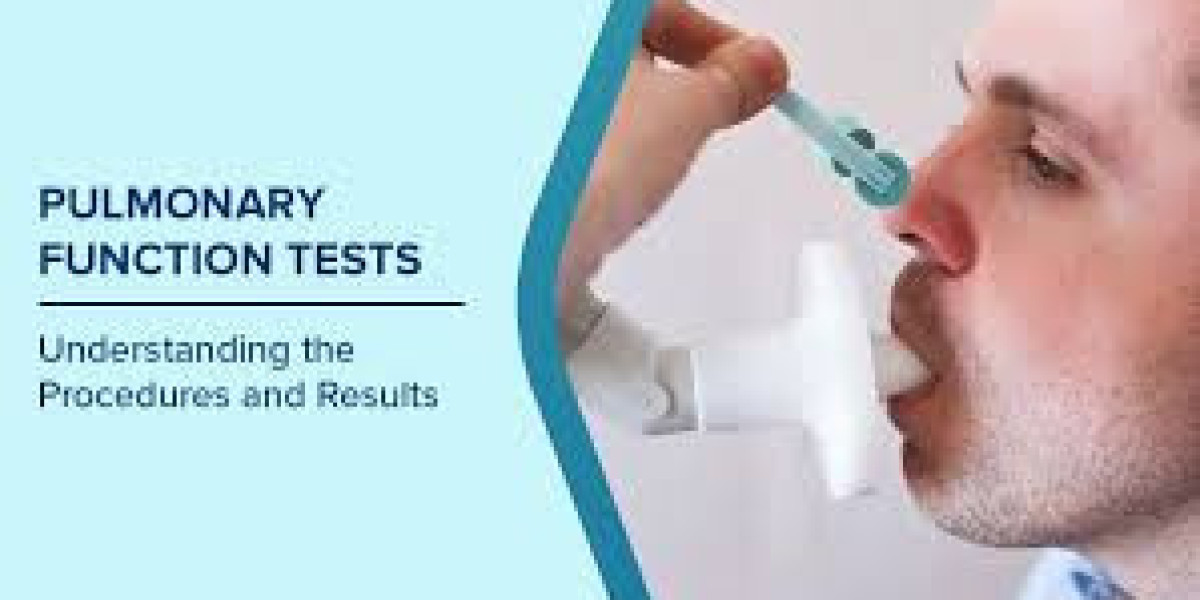Introduction
Pulmonary Function Tests (PFTs) are a group of non-invasive tests that measure how well your lungs work. They assess lung volume, capacity, rates of airflow, and gas exchange, helping doctors diagnose and monitor respiratory conditions like asthma, COPD, and pulmonary fibrosis.
If you’ve been experiencing shortness of breath, chronic cough, or other breathing difficulties, your doctor may recommend PFTs. In this comprehensive guide, we’ll explore:
What Pulmonary Function Tests are
Why they’re performed
Different types of PFTs
How to prepare for testing
Understanding your results
Frequently asked questions
By the end, you’ll have a clear understanding of how these tests work and their importance in respiratory health.
What Are Pulmonary Function Tests (PFTs)?
Pulmonary Function Tests (PFTs) evaluate how effectively your lungs take in and release air, as well as how well they transfer oxygen into your bloodstream. These tests help diagnose:
Obstructive lung diseases (e.g., asthma, COPD, bronchitis)
Restrictive lung diseases (e.g., pulmonary fibrosis, scoliosis)
Neuromuscular disorders affecting breathing (e.g., ALS, muscular dystrophy)
PFTs are often performed in a hospital or specialized clinic using a spirometer or plethysmograph.
Why Are Pulmonary Function Tests Done?
Doctors order PFTs for several reasons:
Diagnose Lung Conditions – Helps identify asthma, COPD, emphysema, or interstitial lung disease.
Monitor Disease Progression – Tracks changes in lung function over time.
Assess Treatment Effectiveness – Determines if medications or therapies are working.
Pre-Surgical Evaluation – Checks lung capacity before major surgeries.
Occupational Health Screening – Required for workers exposed to hazardous substances (e.g., coal miners, construction workers).
According to the American Thoracic Society (ATS), PFTs are essential for managing chronic respiratory diseases, affecting over 340 million people worldwide (source: ATS Journals).
Types
There are several types of PFTs, each measuring different aspects of lung function:
1. Spirometry
Measures: How much and how quickly you can exhale air.
Key Metrics:
Forced Vital Capacity (FVC) – Total air exhaled forcefully.
Forced Expiratory Volume in 1 Second (FEV1) – Air exhaled in the first second.
FEV1/FVC Ratio – Helps differentiate obstructive vs. restrictive diseases.
2. Lung Volume Tests
Measures: Total lung capacity (TLC) and residual volume (RV).
Types:
Body Plethysmography – Uses a sealed chamber to measure lung volumes.
Nitrogen Washout – Tracks nitrogen levels in exhaled air.
3. Diffusion Capacity Test (DLCO)
Measures: How well oxygen passes from lungs into the blood.
Used For: Diagnosing pulmonary fibrosis or emphysema.
4. Bronchial Provocation Test
Purpose: Checks for asthma by measuring airway sensitivity.
Method: Inhales methacholine or performs exercise to trigger bronchospasm.
5. Six-Minute Walk Test (6MWT)
Assesses: Functional exercise capacity in chronic lung disease patients.
How to Prepare for a Pulmonary Test
To ensure accurate results, follow these guidelines:
✅ Avoid smoking for at least 24 hours before the test.
✅ Skip heavy meals 2 hours before testing.
✅ Wear loose clothing to allow deep breathing.
✅ Inform your doctor about recent illnesses or medications.
Note: Some tests may require avoiding bronchodilators (e.g., albuterol) 4-6 hours beforehand.
What to Expect During the Test
Spirometry: You’ll take a deep breath and blow hard into a tube.
Lung Volume Test: Sit in a clear booth and breathe normally.
Diffusion Test: Inhale a harmless gas and hold breath for 10 seconds.
The entire process takes 30-90 minutes, depending on the tests performed.
Understanding Your PFT Results
Results are compared to predicted values based on age, sex, height, and ethnicity.
| Parameter | Normal Value | Abnormal Indication |
|---|---|---|
| FVC | ≥80% predicted | Restrictive disease |
| FEV1 | ≥80% predicted | Obstructive disease |
| FEV1/FVC Ratio | >70% | Asthma/COPD if low |
| DLCO | 75-140% predicted | Impaired gas exchange |
Example:
Low FEV1/FVC ratio suggests obstructive disease (e.g., COPD).
Low FVC with normal ratio indicates restrictive disease (e.g., pulmonary fibrosis).
Frequently Asked Questions (FAQs)
1. Are PFTs painful?
No, they are non-invasive but may cause temporary dizziness from forceful breathing.
2. Who should not take a PFT?
People with recent heart attacks, chest pain, or severe respiratory infections.
3. How often should PFTs be done?
Depends on the condition—asthma patients may need annual tests, while COPD patients may require bi-annual checks.
4. Can PFTs detect lung cancer?
No, but they help assess lung function before cancer treatment.
Conclusion
Pulmonary Function Tests are crucial for diagnosing and managing respiratory diseases. Whether you're being evaluated for asthma, COPD, or another lung condition, understanding PFTs empowers you to take control of your respiratory health.
If you're experiencing breathing difficulties, consult a pulmonologist to determine if PFTs are right for you. Early detection and proper management can significantly improve quality of life.
Have you had a PFT before? Share your experience in the comments!







